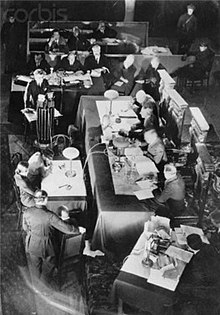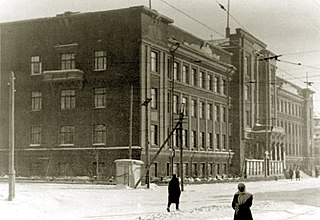
Sharashkas were secret research and development laboratories operating from 1930 to the 1950s within the Soviet Gulag labor camp system, as well as in other facilities under the supervision of the Soviet secret service. Formally various secret R&D facilities were called "special design bureau" Russian: особое конструкторское бюро, ОКБ and similar terms. Etymologically, the word sharashka derives from a Russian slang expression sharashkina kontora,, an ironic, derogatory term to denote a poorly-organized, impromptu, or bluffing organization, which in its turn comes from the criminal argot term sharaga (шарага) for a band of thieves, hoodlums, etc.)
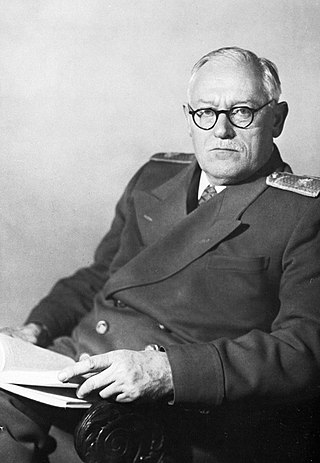
Andrey Yanuaryevich Vyshinsky was a Soviet politician, jurist and diplomat.
The Leningrad affair, or Leningrad case, was a series of criminal cases fabricated in the late 1940s–early 1950s by Joseph Stalin in order to accuse a number of prominent Leningrad based authority figures and members of the All-Union Communist Party (Bolsheviks) of treason and intention to create an anti-Soviet, Russian nationalist, organization based in the city. This happened in the aftermath of the Siege of Leningrad during the war, the victorious end of which led to the mayor, his deputies and others who kept Nazi German forces out of the city earning fame and strong support as heroes all over the USSR.
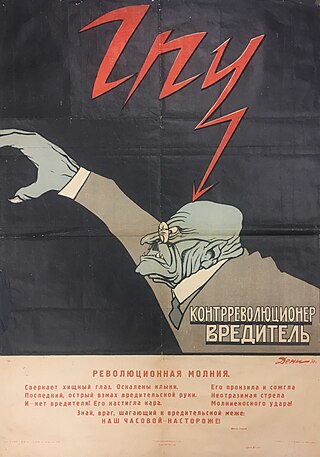
Wrecking was a crime specified in the criminal code of the Soviet Union in the Stalin era. It is often translated as "sabotage"; however, "wrecking", "diversionist acts", and "counter-revolutionary sabotage" were distinct sub-articles of Article 58, and the meaning of "wrecking" is closer to "undermining".
Igor Panteleimonovich Giorgadze is a Georgian politician-in-exile, a former Minister of State Security (1993–1995) and the current leader of the "Samartlianoba" (Justice) Party.
The Case of the Trotskyist Anti-Soviet Military Organization, also known as the Military Case or the Tukhachevsky Case, was a 1937 secret trial of the high command of the Red Army, a part of the Great Purge.

Nikolai Vasilyevich Krylenko was an Old Bolshevik and Soviet politician, military commander, and jurist. Krylenko served in a variety of posts in the Soviet legal system, rising to become People's Commissar for Justice and Prosecutor General of the Russian Soviet Federated Socialist Republic. He was executed during the Great Purge.
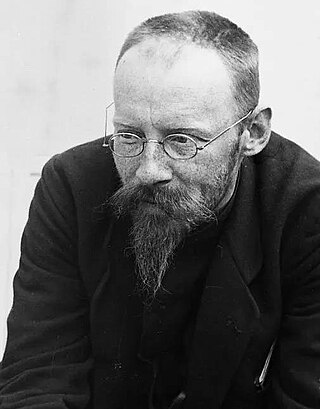
Georgy (Yury) Leonidovich Pyatakov was a Ukrainian revolutionary and Bolshevik leader, and a key Soviet politician during and after the 1917 Russian Revolution. Pyatakov was considered by contemporaries to be one of the early communist state's best economic administrators, but with poor political judgement.

The Shakhty Trial was the first important Soviet show trial since the case of the Socialist Revolutionary Party in 1922. Fifty-three engineers and managers from the North Caucasus town of Shakhty were arrested in 1928 after being accused of conspiring to sabotage the Soviet economy with the former owners of the coal mines. The trial was conducted on May 18, 1928, in House of Trade Unions, Moscow. Thirty-four of the accused received prison terms, while eleven were sentenced to death. The remainder were acquitted or received suspended sentences.

Peter Akimovich Palchinsky was a Russian engineer who played a significant role in the introduction of scientific method into Russian industry.

The Joint State Political Directorate, abbreviated as OGPU, was the secret police of the Soviet Union from November 1923 to July 1934, succeeding the State Political Directorate (GPU). Responsible to the Council of People's Commissars, the OGPU was headed by Felix Dzerzhinsky until 1926, then by Vyacheslav Menzhinsky until replaced by the Main Directorate of State Security (GUGB) within the People's Commissariat for Internal Affairs (NKVD).
The Case of the Anti-Soviet "Bloc of Rightists and Trotskyites", also known as the Trial of the Twenty-One, was the last of the three public Moscow trials charging prominent Bolsheviks with espionage and treason. The Trial of the Twenty-One took place in Moscow in March 1938, towards the end of the Soviet Great Purge. The accused were tortured to extract confessions and publicly admitted their guilt during the show trial. Most of the accused, including Nikolai Bukharin, Alexei Rykov and Genrikh Yagoda, were convicted to death. All charges are considered fabricated except those of Valerian Kuybyshev, Vyacheslav Menzhinsky, and Maxim Gorky who might indeed have been poisoned by NKVD chief Genrikh Yagoda with the assistance of "Kremlin's doctors" Pletnyov and Lev Levin, but they did it on the orders from Stalin himself.
The Moscow trials were a series of show trials held by the Soviet Union between 1936 and 1938 at the instigation of Joseph Stalin. They were nominally directed against "Trotskyists" and members of the "Right Opposition" of the Communist Party of the Soviet Union.
- The "Case of the Trotskyite–Zinovievite Terrorist Center" ;
- The "Case of the Anti-Soviet Trotskyist Center" ; and
- The "Case of the Anti-Soviet 'Bloc of Rightists and Trotskyites'".
The Menshevik Trial was one of the early purges carried out by Stalin in which 14 economists, who were former members of the Menshevik party, were put on trial and convicted for trying to re-establish their party as the "Union Bureau of the Mensheviks". It was held 1–8 March 1931 in the House of Unions. The presiding judge was Nikolay Shvernik.
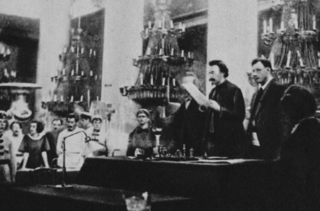
The Trial of the Socialist Revolutionaries was an internationally publicized political trial in Soviet Russia, which brought twelve prominent members of the anti-Bolshevik Party of Socialist Revolutionaries (PSR) before the bar. The trial, which took place in Moscow from June 8 to August 7, 1922, was ordered by Vladimir Lenin and is regarded as a precursor to the later show trials during the regime of Joseph Stalin.
The Metro-Vickers Affair was an international crisis precipitated by the arrest of six British subjects who were employees of Metropolitan-Vickers, and their public trial in 1933 by the authorities in the Soviet Union on charges of "wrecking" and espionage. The show trial garnered international press coverage, generated broad public criticism over alleged violations of legal process, and resulted in the conviction and ultimate deportation of the defendants, following extensive diplomatic pressure.

A coup d'état in the capital of Montenegro, Podgorica was allegedly planned and prepared for 16 October 2016, the day of the parliamentary election, according to Montenegro's special prosecutor. In September 2017, the trial of those indicted in connection with the plot began in the High Court in Podgorica, the indictees including leaders of the Montenegrin opposition and two alleged Russian intelligence agents. Russian government officials denied any involvement. In 2019, the Higher Court found the accused guilty of plotting to commit ″terrorist acts″, also of "undermine the constitutional order of Montenegro" and first instance sentenced 13 people. In February 2021, the appellate court annulled the first instance verdict on all counts of the indictment. The acquittals were upheld on appeal in July 2024.

Ivan Alekseyevich Akulov was a leading Russian Old Bolshevik revolutionary, Soviet official and statesman, who for a few months was nominally second in command of the political police, the OGPU.

Pavel Nikolayevich Malyantovich was a Russian politician and lawyer. Minister of Justice of the Provisional Government (1917), Supreme Prosecutor of Russia (1917). He was arrested during the Great Purge and later executed.

Lev Nikolaevich Smirnov was a Soviet lawyer, Chairman of the Supreme Court of the Soviet Union in 1972–1984, Chairman of the Association of Soviet Lawyers, Hero of Socialist Labour.
